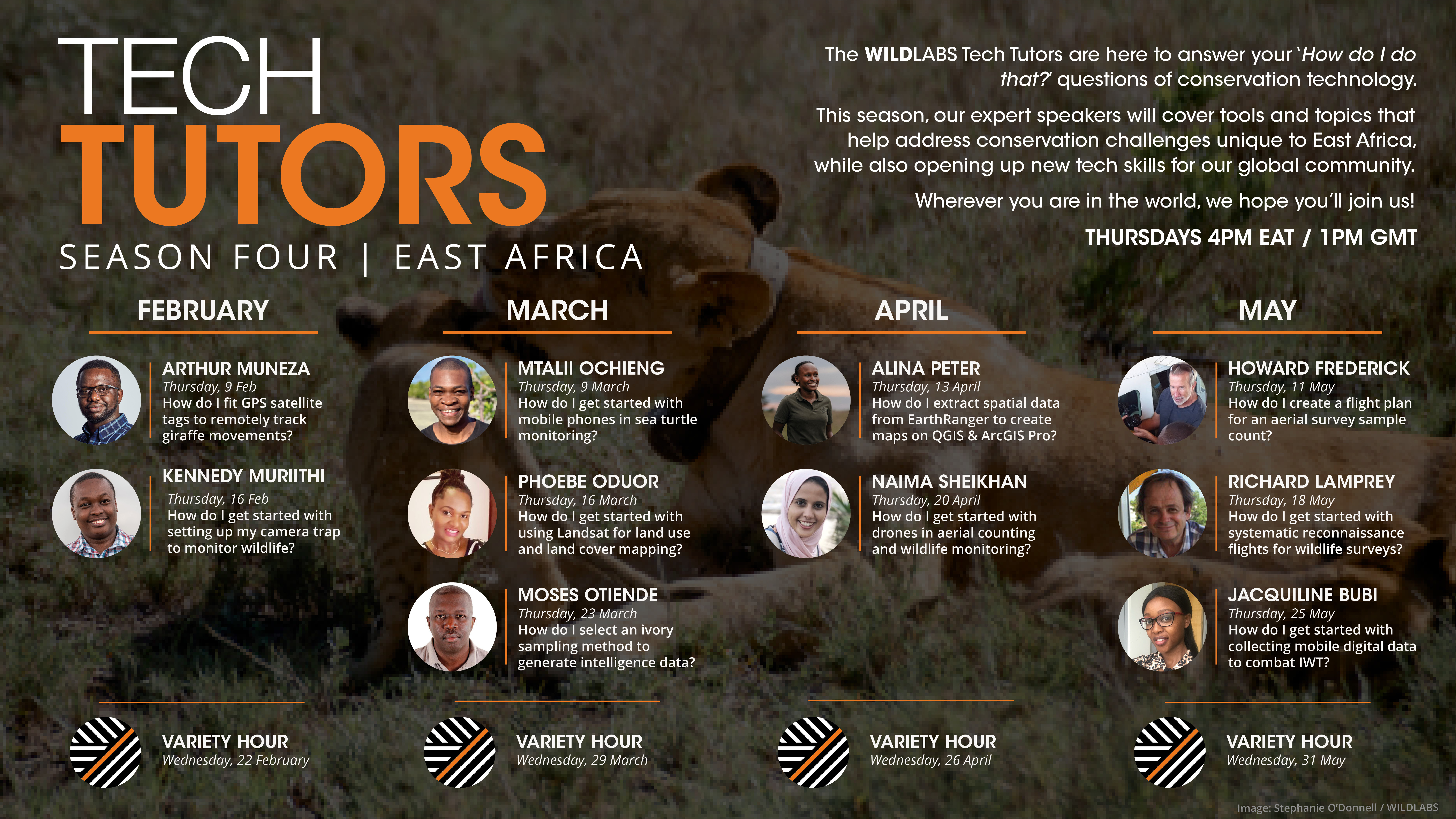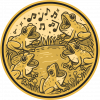About this Episode
The WILDLABS Tech Tutors are here to answer the "how do I do that?" questions of conservation technology! These tutorials will provide practical skills and steps that will become the building blocks you need to push your conservation tech work and research forward. This season, the focus will be to answer the questions emerging from our growing East Africa regional community, while also opening up new tech skills for our global community.
On Thursday, February 16th at 4 PM EAT / 1PM GMT Kennedy Muriithi from Ol Pejeta Conservancy answered the question, "How do I get started with setting up my camera trap to monitor wildlife?" While camera traps are one of the oldest and most common tools used in wildlife monitoring, many are not fully aware of how best to select and them set up for studying and monitoring wildlife movement. In this second episode, Kennedy helped us discover a few tips and tricks when setting up and mounting your camera traps for wildlife monitoring.
If you missed the session, you can catch up with the recording here.
Meet your Tutor: Kennedy Muriithi
Kennedy Muriithi is an IT engineer working at the Conservation Tech Lab, Ol Pejeta Conservancy. His role revolves around supporting the rapid field-based experimentation, implementation and iterative improvement of a range of existing and emerging technologies to increase Ol Pejeta’s capacity to conserve biodiversity and the ecosystems it supports. With his vast knowledge and long-standing experience in IT, he has been involved in the design, deployment and monitoring of tech tools for wildlife monitoring and management at the conservancy such as camera traps, EarthRanger, SMART, thermal cameras, acoustic sensors, GPS trackers, and much more.
You can learn more about Kennedy here and the work at the Conservation Tech Lab here.
What will I learn in this episode?
Some of what you will learn include, but are not limited:
- Standard camera trap settings and features.
- How best to set up/mount a camera trap in the wild, with a few tips from my experience of what has worked and what hasn’t.
- Data collected by camera traps.
- Monitoring camera traps deployed and batteries.
How can I learn more about camera traps in wildlife monitoring?
Due to the popularity of camera traps in wildlife monitoring, there are many resources available for you to explore. This resource list on WILDLABS, collated by Arie Hammond is a great starting point:
If you need advice about any aspect of your camera trapping work, the Camera Trap community on WILDLABS is a great place for you to connect with and ask questions of people using camera traps in all environments around the world.
Our past Tech Tutors seasons featured multiple episodes for experienced and new camera trappers. Check out:
- Laure Joanny, Alistair Stewart, and Rob Appleby: How Do I Repair My Camera Traps?
- Sara Beery: How do I get started using machine learning for my camera traps?
- Marcella Kelly: How do I choose the right camera trap(s) based on interests, goals, and species?
- Sara Beery, Roland Kays, and Sam Seccombe: Camera Traps Virtual Meetup
If I need to take the next step with camera traps, what is the first thing I should consider?
Due to the heterogeneity of landscapes, it is important to first understand the area in order to set up the camera trap for proper monitoring of wildlife. Having the camera trap mounted in a wildlife corridor or where there is a lot of wildlife movement will help you study movement and behavior better.
What advice do you have for a complete beginner in this subject?
Before selecting a camera trap, you should keep in mind the output for your research and work, as well as the location you are looking to set up the camera trap. This is so that you are able to efficiently collect and analyze data useful to your study.
Access the recording here.
Learn more about upcoming Tutorials
Our line up of tutorials will take place as in the poster and we hope the topics and themes covered by our speakers will be useful in your research, work or discoveries!
To find out more about the entire season, kindly visit this page or contact Netty Cheruto @ [email protected]






Add the first post in this thread.